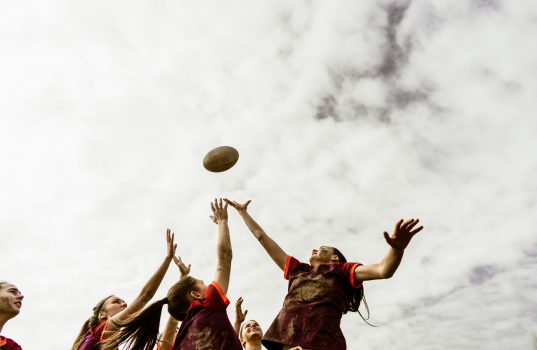GETTY IMAGES’ NEW REPORT SHOWS THE NEED FOR MORE INCLUSIVE REPRESENTATION IN SPORTS MARKETING AHEAD OF TITLE IX’S 50TH ANNIVERSARY
White paper uncovers the current state of representation in sports across communities and American expectations 50 years after the legislation’s passage
New York — June 23, 2022: Today, in anticipation of Title IX’s 50th anniversary on June 23, 2022, Getty Images, a preeminent global visual content creator and marketplace, has released a report focused on the importance of equal gender representations in sport marketing and advertising. The report offers key insights into American perceptions on the topic and actionable steps brands and businesses can take to promote more authentic and inclusive portrayals of women and girls in sports when engaging consumers.
The report, titled ‘A New Era in Sports: The Demand for Intersectional Gender Representation for Women and Girls’ highlights progress made in the 50 years since Title IX was enacted, while showcasing existing barriers to representation of women and girls in sports across communities and situations. For example, according to Getty Images’ VisualGPSproprietary research, media organizations are 33x times more likely to tell stories of male vs. female athletes. In addition, there are 3% more men featured in sports visuals that are popular with brands and advertisers than women. This gap widens significantly in youth sports, where 30% more boys are featured than girls.
The white paper also combines powerful data on the realities of sports representation and inclusion among women and girls, including athletes of color, transgender, nonbinary, and other gender non-conforming athletes, and athletes with disabilities. Along with proprietary research from Getty Images’ VisualGPS, the white paper incorporates data from the newly-released Women’s Sports Foundation research report ‘50 Years of Title IX: We’re Not Done Yet’.
“Our VisualGPS research shows that not only do people desire more inclusive depictions of women and girls sports, but they want brands and organizations to support female sports in a way that’s equitable and authentic,” said Tristen Norman, head of creative insights for the Americas at Getty Images. “Our hope with this white paper is to shed light on the visibility gap for women and girls in sport and provide brands with the tools they need to not only close this gap, but to also reimagine and expand what’s possible for women and girls of all backgrounds playing sports today.”
Data shared by the Women’s Sports Foundation shows that the percent of women athletes competing on college teams has risen from 15% in 1972 to 44% during the 2020-2021 academic year. However, when combined with other research from the Women’s Sports Foundation and Getty Image’s proprietary research we found that:
— 86% of all three NCAA divisions offered disproportionately higher rates of athletic opportunities to male athletes compared to their enrollment (U.S. Department of Education, 2021). Equity in Athletics Disclosure data analysis.
— 32% of girls report that sometimes boys make fun of them or make them feel uncomfortable when they practice sports (Zarrett, N., Cooky, C., & Veliz, P.T. (2019). Coaching through a Gender Lens: Maximizing Girls’ Play and Potential. Women’s Sports Foundation).
— 69% of consumers say that ‘Women athletes are just as capable as men but not given the same funding, training, and coaching opportunities’ (Getty Images VisualGPS).
“Visual images have a powerful way of reflecting diversity, power, strength and joy that girls and women athletes embody,”adds Karen Issokson-Silver, Vice President of Research & Education at Women’s Sports Foundation. “Our research makes clear the need to see more inclusive and authentic representation. It not only inspires but can also accelerate the movement toward greater equality in sports.”
In partnership with AlmapBBDO, and collaboration with Women’s Sports Foundation, Getty Images has also created an interactive timeline and video, showcasing pivotal moments that have redefined sports since the enactment of Title IX in 1972.
See hereto download the white paper and discover more around the current realities of representation in sports and how consumer expectations show a vital need for further changes in visual marketing.
Image credit: AleksandarNakic/Getty Images
Media Relations:
Alex Lazarou
Jenna Attardi

